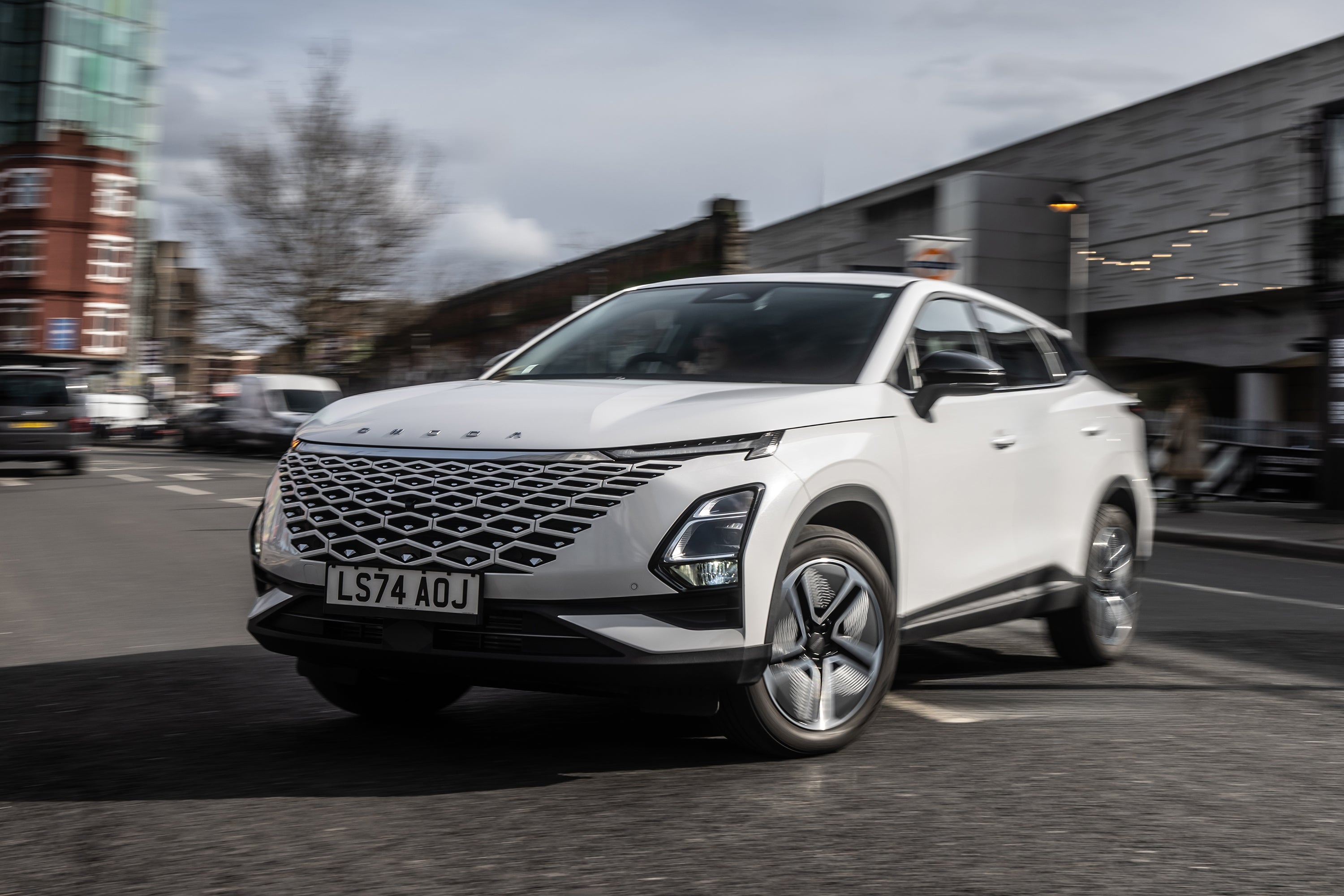Omoda 5 Review 2025: Price, specs & boot space
Written by Ivan Aistrop
Quick overview
Pros
- Looks quite good
- Convincing on quality
- Lots of kit for a low price
Cons
- Petrol powertrain feels very clumsy
- Ride and handling balance isn’t great
- Rivals are more practical
Overall verdict on the Omoda 5
"You probably haven’t heard of Omoda before, let alone the Omoda 5 compact SUV. Well, let our Omoda 5 review explain all for you."
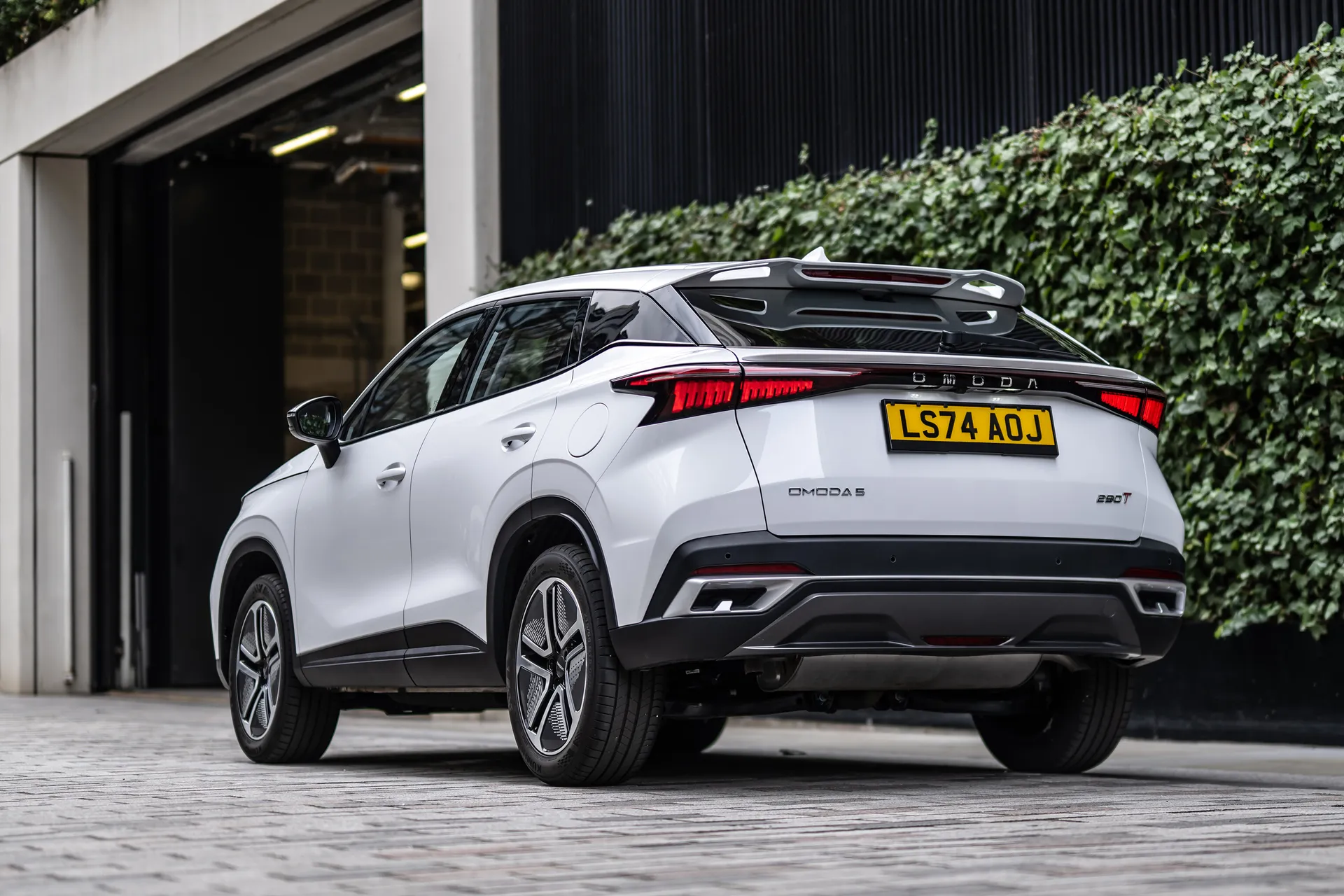
Omoda is one of the influx of new Chinese car brands launching in the UK and Europe in the last few years. The brand is part of a massive Chinese company known as Chery, which is currently the largest exporter of new cars in China, and to do this, Chery uses a number of different brand names according to the international market in which it is operating. Omoda, along with its sister brand Jaecoo, are the two names with which the firm will try to crack the European market.
The Omoda brand officially launched in the UK at the end of 2024, and the 5 is its first offering on these shores. It’s a compact family SUV that’s very close in size to popular cars such as the Nissan Qashqai, and with edgy, angular styling and a heavily sloped coupe-like rear roofline, you might also compare it to the latest Peugeot 3008. And like the Peugeot, the Omoda 5 is offered both with turbocharged petrol power and as a pure electric car, known technically as the E5.
Where the Omoda differs most from its big-selling rivals is on price: it’s a lot cheaper, with prices for the petrol car starting at around £25,000, and prices for the EV starting at around £33,000. Not only are prices low, but standard luxury equipment is also very plentiful. And the success of MG in recent years has shown us that if anything is going to tempt buyers away from established brands and into relatively unknown Chinese products, then it’s this kind of high-value-for-money proposition.
It doesn’t feel cheap on the inside, either. The interior is actually pretty impressive in the quality of both the materials used, and their assembly, so you won’t feel like too much of a second-class citizen by choosing the Omoda. It’s not the most practical car of its type, but is should be good enough on that score to satisfy the needs of most families.
It’s not all good news, mind. Another area in which Omoda is different to established brands is in the level of dynamic polish displayed by its vehicles, which as we’ll find out later on in this review, is rather limited in the case of the 5. There are sacrifices to be made, then, but whether those sacrifices are worth making will be up to you.
Is the Omoda 5 right for you?
What's the best Omoda 5 model/engine to choose?
What other cars are similar to the Omoda 5
Comfort and design: Omoda 5 interior
"Oddly, the interior design you get in the Omoda 5 depends on whether you choose the petrol-powered car or the all-electric version, because each gets its own dashboard layout."
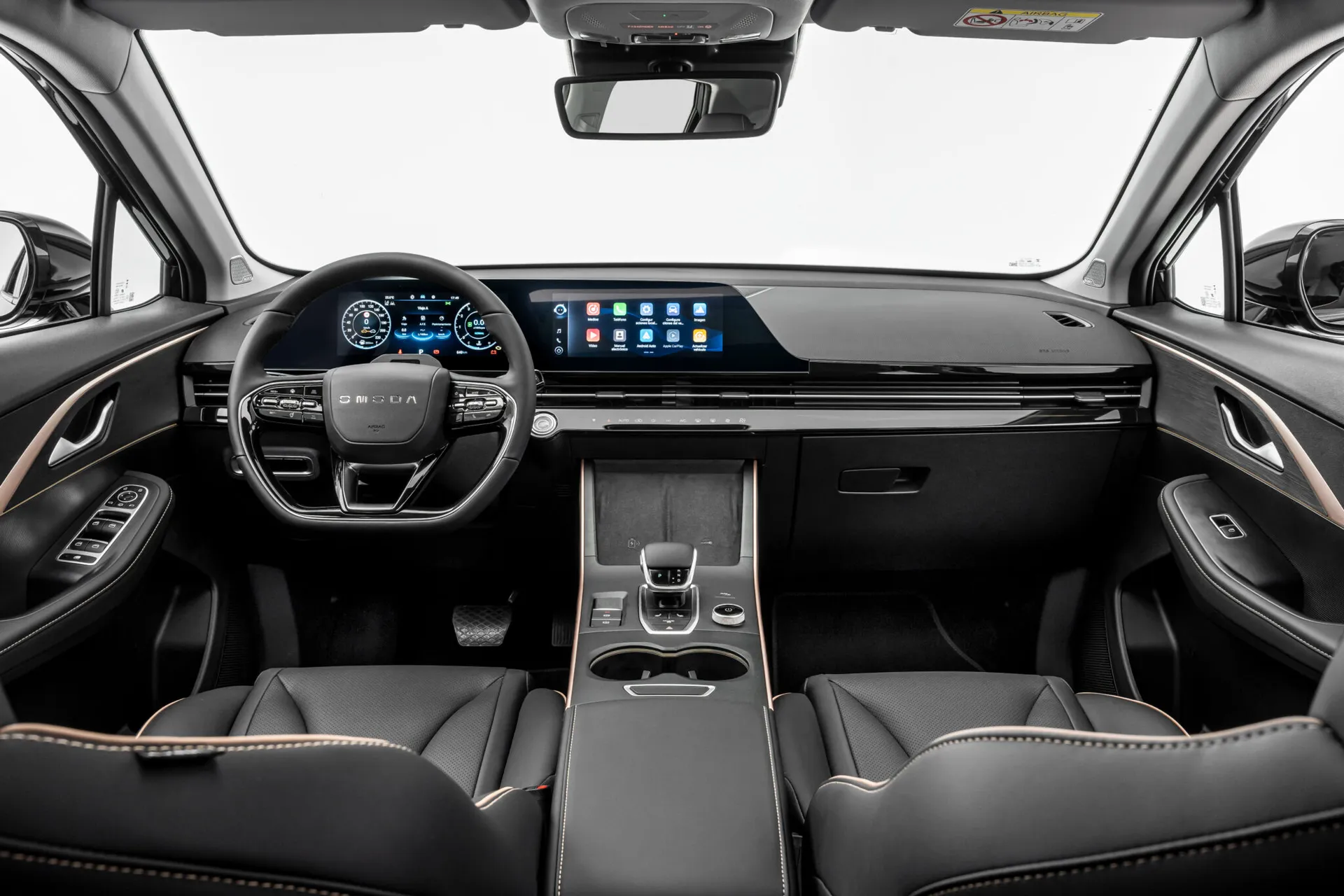
In the petrol-powered car, for instance, you get touch-sensitive air-con controls on the dashboard just below the central infotainment screen, while the centre console houses both the gear selector and a wireless phone charging pad.
In the electric version, meanwhile, the drive selector is a steering-column-mounted affair, while the air-con system is operated solely through the touchscreen. This version also comes with subtly different integrations of things like the air vents and window switches. Both arrangements are reasonably effective, although as usual, we’d prefer it if the user interface of both were less reliant on the touchscreen.
All versions have electrically adjusting seats, making it easy to find a comfy position, and there’s a decent amount of manual adjustment in the steering column, too. However, you’ll find your rear visibility hampered by the tiny rear window, flanked by thick pillars, both side-effects of the heavily sloping roofline.
Quality and finish
Infotainment: Touchscreen, USB, nav and stereo in the Omoda 5
Space and practicality: Omoda 5 boot space
Handling and ride quality: What is the Omoda 5 like to drive?
"The Omoda 5’s aggressive pricing will be much more of an attraction to potential buyers than the way it drives, but even so, it still needs to do a presentable job on that score to be taken seriously among a host of much more recognisable rivals."

And presentable it is, but that’s about as positive as you can be about the way the car behaves on the road, and least in the petrol-powered form in which we’ve tried it to date. It’s at its best on the motorway, where the soft-ish suspension soaks up high-speed bumps without creating too much vertical bounce, keeping your life civilised and serene.
However, the car struggles more at lower speeds: despite the soft setup, there’s still a brittleness to the ride that gives quite an unsettled feel over grainy urban surfaces. When faced with bigger imperfections such as speed bumps, potholes or sunken drain covers, you feel more of a whack through the suspension, which is then exacerbated by a small amount of vertical bobbing up and down.
Yes, you can feel some body roll as you change direction, but not to the extent where anyone inside will start feeling green around the gills, and such a dynamic trait is perfectly acceptable in a family SUV. That said, the steering has a rather rubbery, artificial feel that isn’t all that satisfying or accurate, and the car generally feels heavier than it actually is (the petrol-powered car we drove weighs in at a very reasonable 1,423kg), especially when you’re on the brakes trying to slow up or stop.
All in all, it’s definitely the case that many rivals feel a good bit more precise on the road, but the biggest problem with the way that the petrol car drives is the clumsy way in which it delivers its power.
What engines and gearboxes are available in the Omoda 5?
Maximum electric range in the Omoda 5
Refinement and noise levels
Safety equipment: How safe is the Omoda 5?
MPG and fuel costs: How much does a Omoda 5 cost to run?
"It’s no good having a low list price if the car then costs you a bomb to run. It might not look like great news, then, that in an era of hybridisation and electrification, the petrol-powered drivetrain in the Omoda 5 looks distinctly old-school."
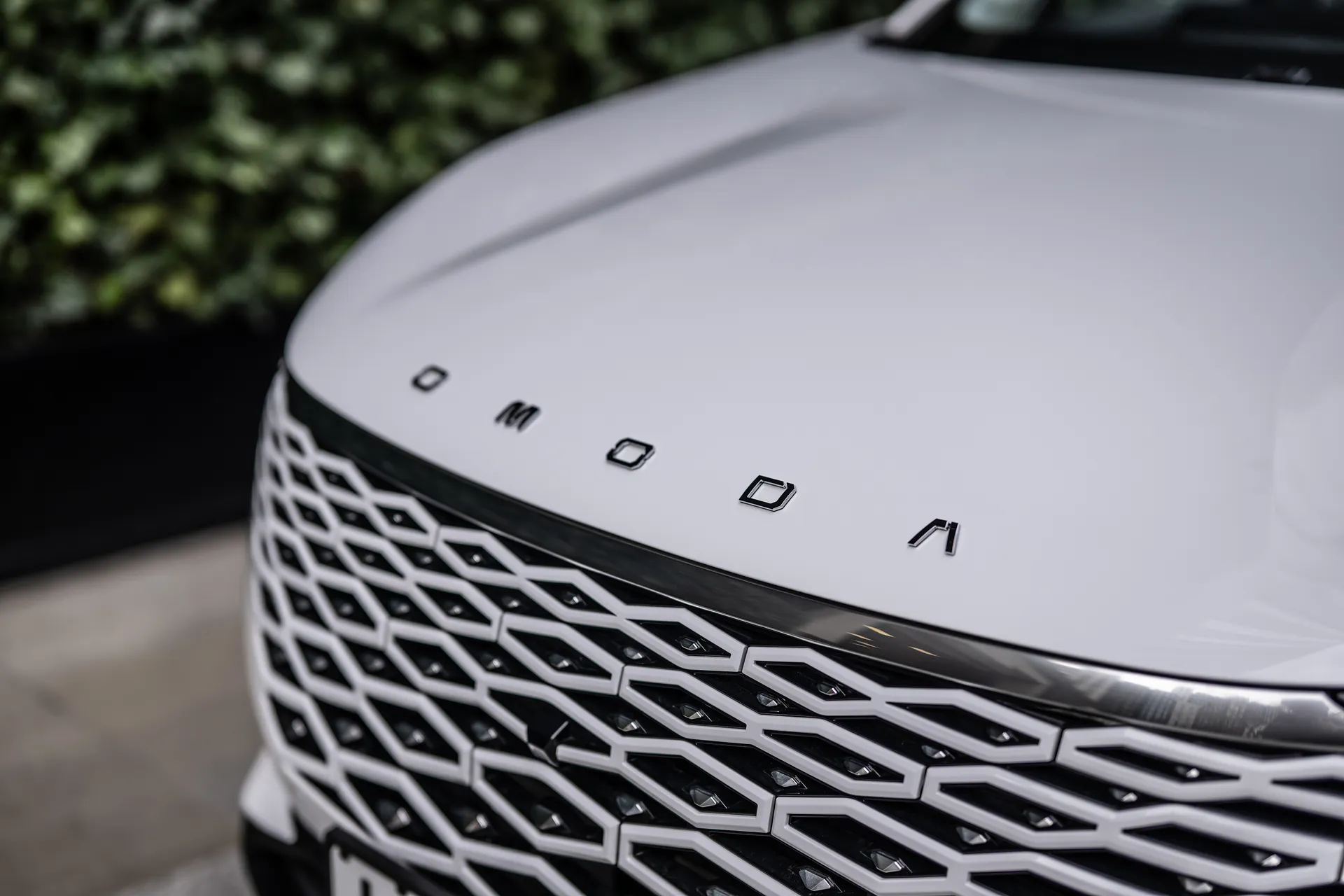
And sure enough, the Omoda’s combined WLTP fuel consumption figure of 31.4mpg is quite poor. For context, the entry-level Qashqai, which is admittedly less powerful, has an official return in the mid-forties, and that’s before you’ve even thought about the full hybrid version.
Charging times: How much does it cost to charge the Omoda 5?
Omoda 5 reliability and warranty
Omoda 5 insurance groups and costs
VED car tax: What is the annual road tax on a Omoda 5?
Omoda 5 price
"This is where the Omoda 5 might tempt you, because although it looks very smart inside and out, it’s very aggressively priced, especially given the amount of standard equipment it comes with."
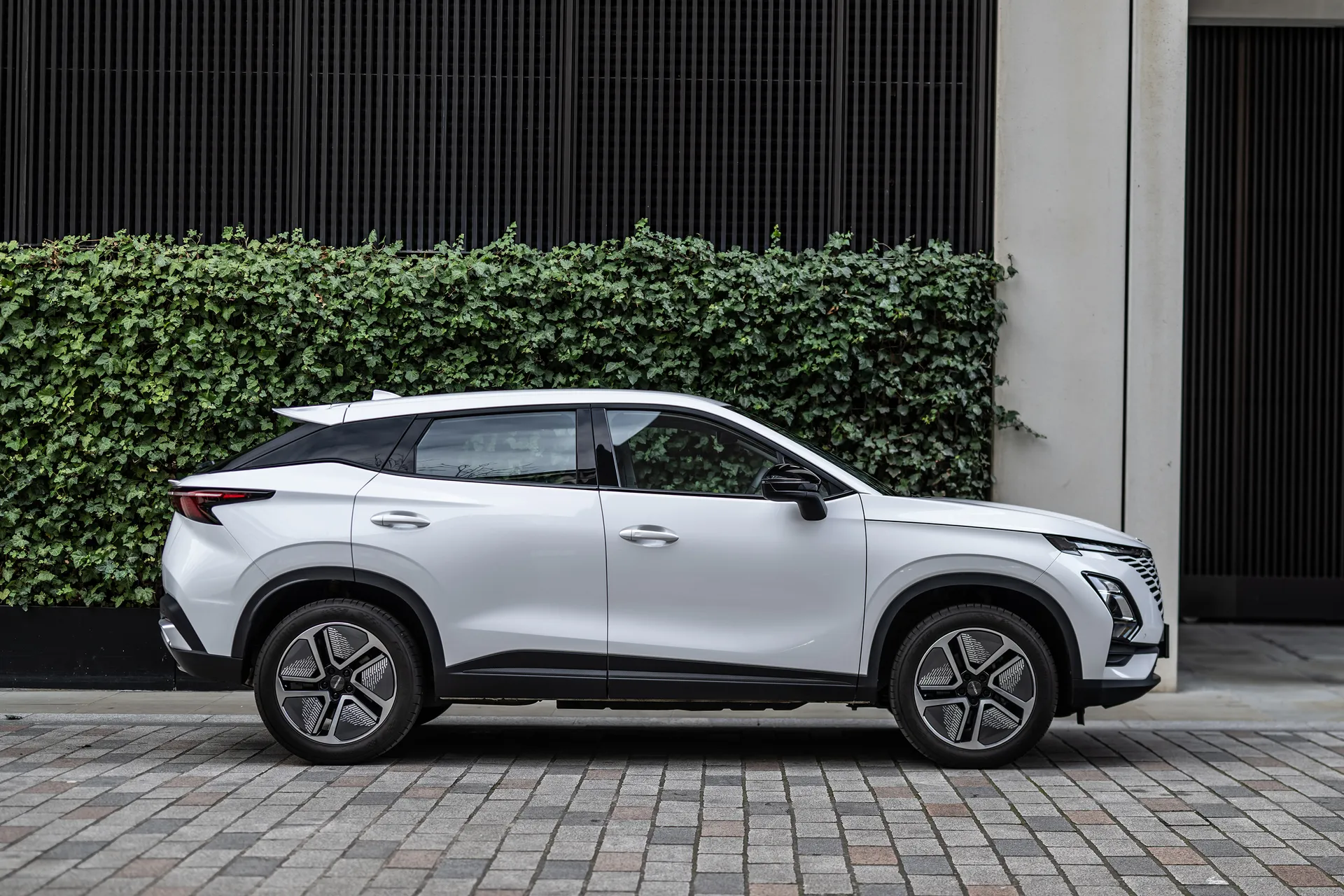
Buy a petrol-powered 5, and brand new prices start from around £25,000, while the more luxurious Noble version sets you back around £27,000. For context, even the very cheapest version of the Qashqai will cost you upwards of £30,000, for which you get considerably less power and slightly less kit.
If you’d prefer to go all-electric, then the E5 is priced at around £33,000 in Comfort trim, or around £35,000 for the Noble. Again, for comparison, the similar-looking Peugeot e-3008 costs around £36,000 even in its most basic form.
And even though the car hasn’t been on sale for all that long, quite a few used examples have already made their way into the heycar classifieds, and there are some very big savings to be made. Around £23,000 is enough to put you into an example that’s less than a year old with inconsequential double-digit mileage, and that amount is similar regardless of whether you’re talking about the petrol version or the EV version.
Trim levels and standard equipment
Ask the heycar experts: common questions
What is the Omoda 5?
Is the Omoda 5 any good?
Is the Omoda 5 electric?
Omoda 5 cars for sale on heycar
Omoda 51.6 TGDI Noble 5dr 7DCT
20249,405 milesPetrol£326 mo£21,188
WF29SAOmoda 5150KW Comfort 61kWh 5dr Auto
20244,598 milesElectric£277 mo£19,999
Great priceB920LROmoda 51.6 TGDI Noble 5dr 7DCT
20246,835 milesPetrol£332 mo£20,991
Good pricePO198TXOmoda 5150KW Comfort 61kWh 5dr Auto
20243,000 milesElectric£300 mo£21,625
Good priceCT126SJOmoda 5150KW Noble 61kWh 5dr Auto
20254,050 milesElectric£345 mo£24,357
BL32RY
Omoda 5 Alternatives
Get our latest advice, news and offers
Keep me updated by email with the latest advice, news and offers from heycar.
By submitting you agree to our privacy policy
